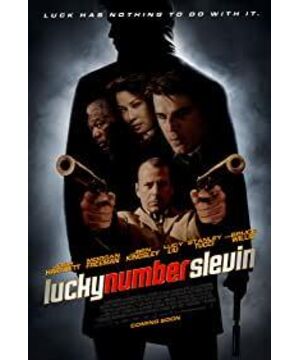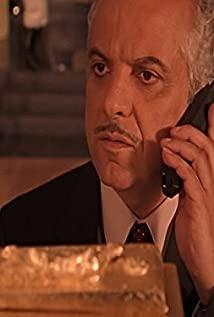The movie is good, it is much better than the first level alert I watched before,
but I have to be patient to watch the movie
because the first paragraph of the movie is really boring. Director and screenwriter, presumably because Quentin Tarantino's films are very popular in America. So I feel that almost all of the character settings and dialogues with characters are imitations.
To be honest, I don't really like the early morning videos with Tarantino so far, it's too much dialogue and it's rap, usually big chunks of nonsense. In the past, I didn't understand why foreigners liked this guy's nonsense movies. Later, after listening to a lot of black American rap music and reading the lyrics, I understood why. Young people are always dissatisfied with reality, always think that the future will be better, and their energy is never exhausted, so they always love to talk nonsense and listen to other people's nonsense.
However, the screenwriter has a good understanding of this style. In the dialogue, there is a cold humor from time to time, which is also refreshing.
In the film, the director did not use the popular fast editing, but adopted the static and violent aesthetics that Eastern directors like to use, and the Tarantino-style secular violence aesthetics The
lens always slowly rolls in and out, emphasizing the actors The composition of the standing position, and finally in the slow picture, even in the static picture, the action scene suddenly unfolds. However, it is clear that there is still a gap between the director's skills and Du Qifeng's, not to mention several other masters in this area.
The film also does its best to imitate Tarantino's secularized, violent aesthetic. In the rambles and broken thoughts of the actors, violence suddenly unfolded. Let people see both the secular side of the killers and their cold-blooded side.
The beginning of the film is cliché, cliché, very cliché, and there are many mistakes in logic. For example, although the male protagonist is forcibly asked by the gang boss to pay off his debts, he is half-assisted.
At this time, many people must have become impatient, so the director and screenwriter hurriedly came to make fun of a beautiful woman, and a scene of a gunfight.
After the hot shootout ended, the content of the film changed and the story began to be told.
After explaining some of the previous logical inconsistencies and the characters that were too superfluous,
the audience who had been trapped by the traps set by the movie suddenly realized that this is what the story is about.
So, the whole film, if you put aside the structure, is just the story, it doesn't make any sense to retell it.
The highlight of the film is that it sets up a trap, using the audience's habitual thinking when watching movies, so that the audience has a preconceived notion of the plot. Finally, dismantle the trap and completely overturn the audience's previous concept, so that the audience will immediately understand.
Because of this, the film has a high score of 7.5 on imdb, but only 5.9 on Rotten Tomatoes.
Imdb is generally a young audience, so the score is usually determined according to personal preferences when watching movies, while Rotten Tomatoes, There are many professional film critics, so after tearing off the film's structural coat, I found that the film is just average.
Since I saw the male protagonist facing two gang bosses asking him to pay off their debts for no reason, I guessed his true identity and understood, this may be a teenage revenge story. So the subversive plot after the shootout didn't whet my appetite.
So, only give the number of melon seeds shells 70
(attachment:
Tarantino's secularized violence aesthetics: This secularized violence aesthetics is given by me, huh, it seems that no one has given his violent aesthetics a specific name yet.
In Kun In Din Tarantino's films, the director no longer acts violently for the sake of violence, but pulls away from its original meaning and completely changes it into a game, a state of everyday life. The film no longer exists in the viewer's sight. In "Pulp Fiction", Quentin Tarantino jokes and normalizes violence, the underworld killer Zu grabs each other's breakfast before killing, and by the way discusses which one's The burgers are delicious, and they educate each other by citing biblical philosophy very seriously; a pair of teenagers want to rob a restaurant on a whim, and go away satisfied under the guidance of a veteran criminal; another killer, Vincent, has just made the audience a little favored , was killed casually; and Zu and Vincent encountered a big trouble that could not be escaped, just because Vincent took the fire and killed an irrelevant person.
Aesthetics of Static Violence:
"John Ford is an optimist, I'm a pessimist. In the Ford movie a guy opens the window and they see
a horizon of hope, whereas in mine you worry if a bullet will Hit your eyebrows."
- Sergio Leone Sergio Leone
is like the "Jianghu" of Chinese martial arts, Sergio Leone's film territory is a territory without legal control and no
clear division of evil , only the rules of the rivers and lakes, a world where success or failure is resolved by force, duel, and revenge, in which lone warriors, green forest
heroes . It is full of violence, but it is also full of legends.
"Good-looking" is one of the biggest features of Sergio Leone's films. It is to create conflict first, emotional, event, and
various conflicts pile up into a climax. Then create the atmosphere, tense and chill. Use the atmosphere to set off the excitement of the action.
It is almost mysterious, and one move will fix the world.
The "static violence aesthetics" that we talk about today, such as Kitano Takeshi's [Fireworks], Quentin's [Reservoir Dogs], Johnnie To's [
Gunfire , [PTU], or Gu Long who writes martial arts novels (it is said that the ancient Heroes love Leone's movies), and their
creative roots actually come from Leone's movies.
)
View more about Lucky Number Slevin reviews











